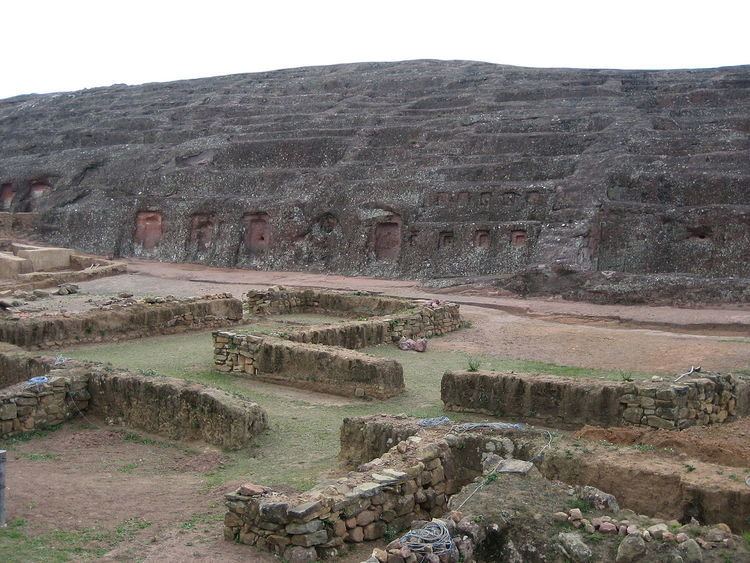 | ||
The Chané or Izoceño are a native ethnic group whose traditional lands are in the plains and valleys between the Gran Chaco and the Andes in northern Argentina, Paraguay and southern Bolivia.
Contents
History
The Chanes, together with other Arawak groups, left Guyana approximately 2,500 years ago. They developed an agrarian culture, built densely populated villages, cultivated corn, peanuts, cotton and squash, and are famous for their ceramics and graphics which have been found mainly in the pampas surrounding the city of Santa Cruz de la Sierra, El Fuerte in Samaipata, and in Portachuelo, Valle Abajo, Okinawa, Cotoca, El Pari, Mataral and Warnes. They also craft wooden masks and fabric clothing.
An ancient Chané religious site is El Fuerte de Samaipata, now a UNESCO World Heritage Site.
They were a rather peaceful culture and traded with the Quechua-speaking Incas in the Andes and with other Arawak-speaking groups to the north and east. Chanes and Incas established a truce to join forces against the Guaraní tribes from the south, which the Incas called Chiriguanos. The Guaraní tribes raided the Chane homeland on a regular basis, and prior to the Spanish conquest, the Guaraní defeated both Chanes and Incas and conquered the plains and valleys of what is now the Santa Cruz Department of Bolivia. Some Chane were forced into slavery by the Guaraní, others migrated to less fertile regions to the southeast. Many Chane women were taken as wives by Guaraní men, thus starting a process of assimilation. Both Guaraní and Guaraní-speaking Chane also assimilated and mixed with Europeans during the colonial period and after the independence of both Argentina and Bolivia.
Distribution
There are some Chane communities still living in the Izozog region in Santa Cruz, Bolivia, and in Yacui and Che-Renda near Tartagal, Argentina. In both cases, they have been influenced by the Guaraní language and culture, but still retain their Chane identity. The other descendants of the Chane culture were first mixed with the Guaranis, later with the Spaniards, and in the last two centuries with migration flows of other Europeans, Arabs, and migrants from other parts of Bolivia and Argentina. The Chane culture is an important heritage component of the populations of Santa Cruz, the Paraguayan Chaco, Salta Province, Jujuy Province and the Argentine Chaco.
